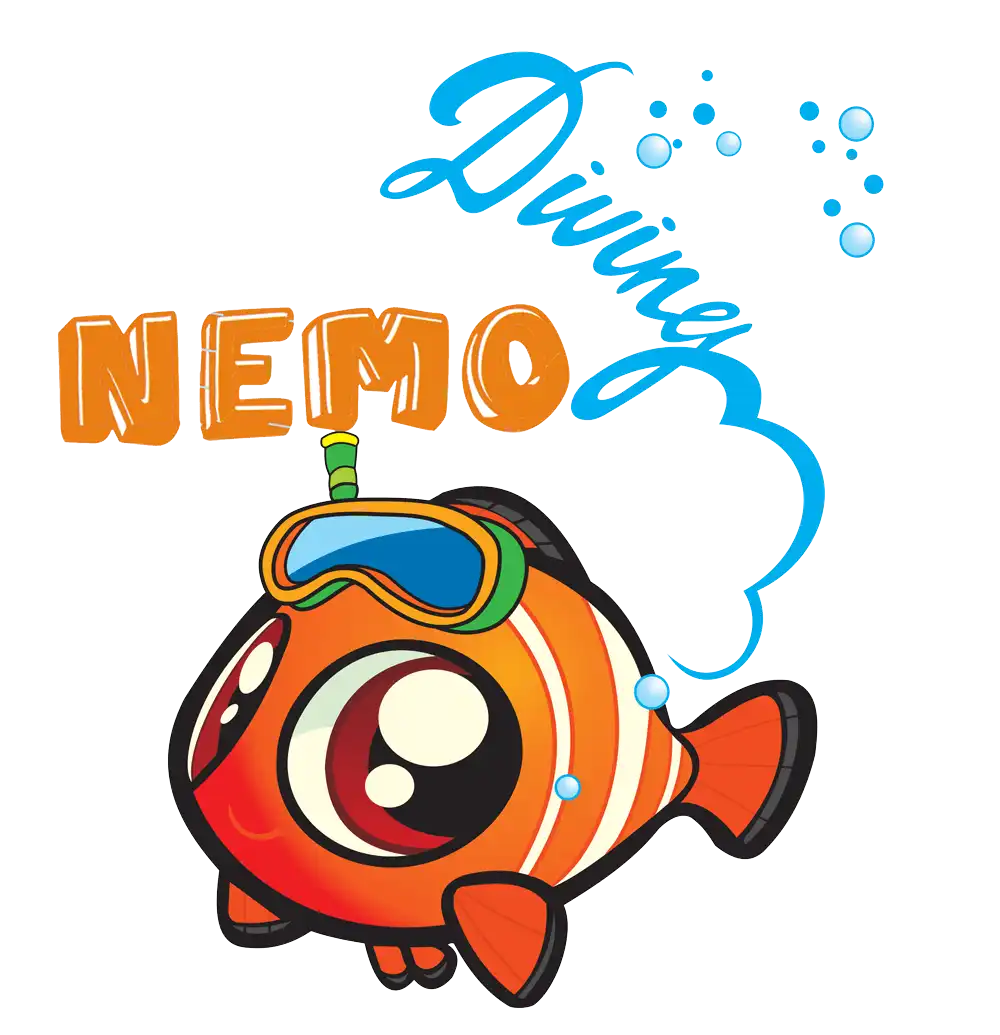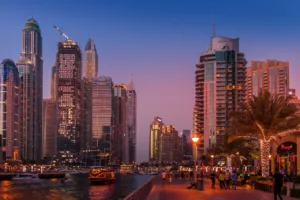
If we have rainforests on land, we also have a stunning version of it underwater in the form of colorful coral reefs. But did you know that corals are in fact animals and not plants? Although many corals resemble plants, trees and flowers, they are actually small marine invertebrates that belong to a large group of colorful animals called Cnidaria which includes sea anemones and jellyfish. Coral reefs comprise only about one percent of the ocean floor but they have a significant impact on the health of the environment on a global scale. This means that when our coral reefs are flourishing then our oceans are in good condition which contributes to a healthy planet.

Coral reefs are one of the main attractions of most diving trips and many divers can’t help but be fascinated with them. If you’re like those divers who find corals captivating, you might want to learn more about the different types of corals so you can identify them during your dive. There are a plethora of corals in the ocean but to make it more simple, they can be categorized into soft and hard corals.
Hard corals have been tagged as the architects of the reef because their hard, calcium-based skeletons help build a major part of the coral reef’s structure. These colonies have a symbiotic relationship with tiny algae called zooxanthellae which is crucial to the reef’s survival. Here are some examples of interesting hard corals.
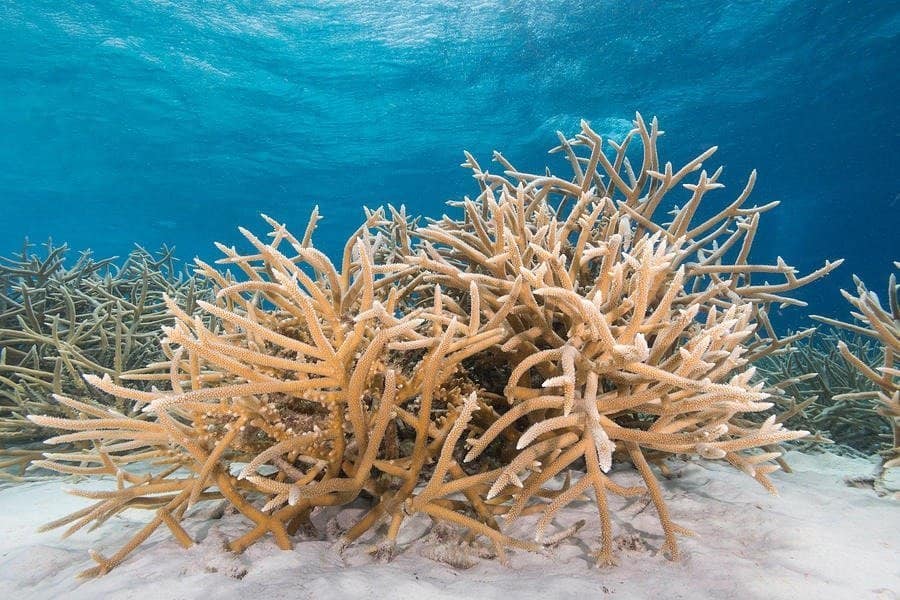
Staghorn coral is a significant part of the Caribbean since they built the reefs in the area during the last 5,000 years. Their small formations called “thickets” found in shallow areas provide a habitat for different kinds of fish and other reef residents.
Elkhorn coral develops massive branches that separate into planes near the edges of the colony. When this coral grows and fulfills its cycle, the lifeless elkhorn skeletons add stony structure to the reef. As they expand over time, they eventually grow bigger than a human.
Table coral, like its name suggests, appear like underwater tables where reef fish can congregate. Their shape allows them to get a lot of sun exposure while the fish use them for shelter.
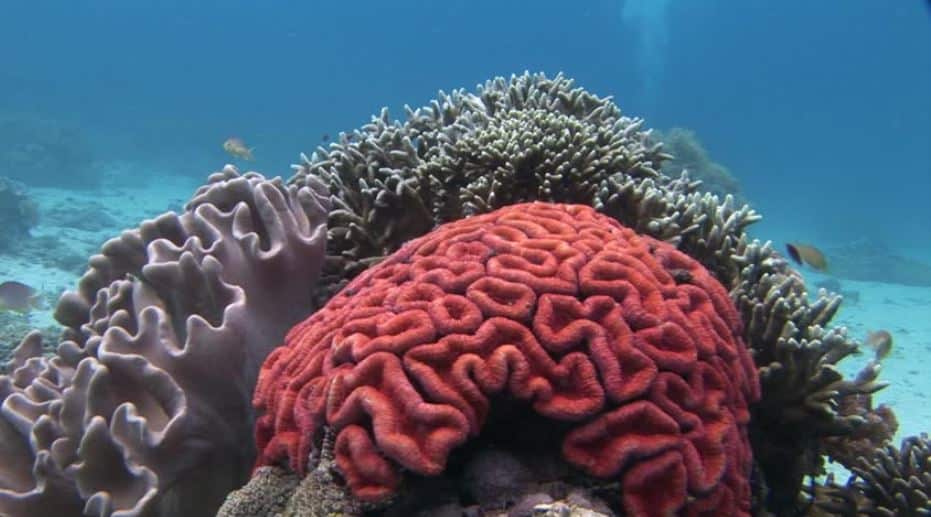
Brain Coral is another colony-building hard coral which resembles the physical traits of a brain. This type of hard coral outlives most of the creatures and organisms in the ocean because it can live up to 900 years.
Soft corals are supple, flexible, and graceful invertebrates that you usually see swaying at depths between 5-30 meters that are similar to plants or trees. The absence of hard calcium carbonate skeletons normally found on hard corals makes them appear like leafless branches underwater. They come in a variety of exotic forms and stunning colors which make them some of the most attractive corals in oceans. There are generally six types of soft corals namely Gorgonian (a.k.a. Sea Fans), Carnation Coral, Toadstool Coral, Bubble Coral, Tree Corals, and Sea Pens. These organisms form colonies of polyps that feature eight feathery tentacles, unlike hard corals that only have six tentacles. Another interesting thing about these invertebrate animals is their ability to grow even when sunlight is limited. The following are a few examples of stunning soft corals that you may encounter during your dive.
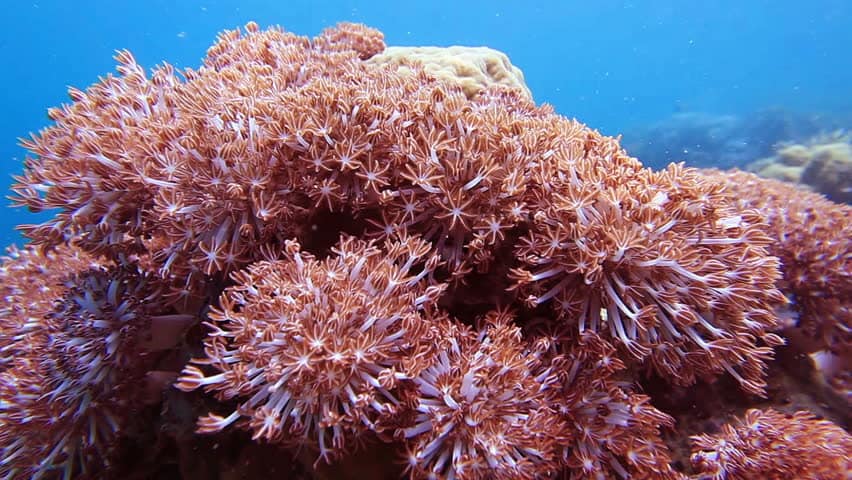
Pulsing Xenia is one of the most distinct soft corals that have a crown of feathery polyps that exhibit colors like rust, cream, white, or pink. If you see a Pulsing Xenia during your descent, observe how the polyps open and close in a rhythmic pulsing action which makes them quite enthralling to watch.
Carnation Tree Corals belong to the genus Dendronephthya, also referred to as Cauliflower Corals, Strawberry Corals, and Tree Corals. They are easy to spot underwater because they resemble small size sea anemones and come in exuberant hues such as deep red, pink, orange, and green.
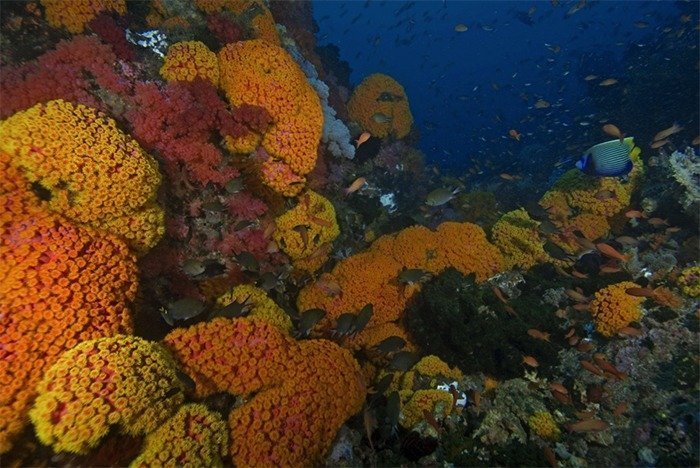
Sunburst Corals appear like a beautiful bouquet of sunflowers beneath the waves. Since they do not depend on sunlight for nourishment, this type of soft corals can thrive in the deep and are known to colonize wrecks. Their bright yellow and orange color combination makes them stand out among other corals.
Red Sea Fingers is a colonial soft coral usually have a blood-red or rust palette. They come with finger-shaped lobes, hence the name, which can measure up to 30 cm. They are identifiable by their white polyps with eight tentacles each which give them a feathery look. Red Sea Fingers may be found in the East Coast of the United Arab Emirates and you’re likely to see it when you go wreck diving in Inchcape 2.
Familiarizing yourself with different types of corals can make your next scuba diving adventure in Dubai more exciting and meaningful. If you enjoy underwater photography, it is easier to tag your snapshots with the name of the coral. You can even help organizations like the National Oceanic and Atmospheric Administration (NOAA) by sharing your coral observations with them.
Experiences
Find the perfect escape
© 2024 NEMO DIVING CENTER
Scuba diving is an exciting and adventurous water sport that offers a chance to explore the beauty of the underwater world and its amazing marine life. The UAE, particularly Dubai, is one of the most popular destinations for scuba diving, attracting divers from all over the world. With its crystal clear waters and diverse marine life, scuba diving in Dubai offers a unique and unforgettable experience.
The cost of scuba diving in Dubai varies depending on the dive center you choose and the type of dive you opt for. On average, a single dive can cost anywhere from AED 250 to AED 550, with the average price for a single dive being around AED 350. This price usually includes all the necessary equipment, such as the dive tank, regulator, and wetsuit, as well as the services of a professional dive guide. At Nemo Diving Center, We offer a wide range of diving packages to suit every budget and experience level.
Diving in Dubai is an incredible experience, and the UAE is home to many dive sites teeming with amazing marine life including colorful soft and hard corals, sea turtles, stingrays, manta rays, moray eels, cuttlefish, octopus, nudibranchs, seahorses, and a plethora of fish species. It is also noted for its incredible dive wrecks that have become rich artificial reefs. These dive sites offer a unique and exciting diving experience, providing a chance to explore sunken ships and other structures that have become havens for marine life.
Come and explore the unique underwater world of Palm Jumeriah in Dubai and incredible dive sites in Fujairah such as Dibba Rock, Sharm Rock, Martini Rock, Snoopy Island, and more. At Nemo Diving Center, we offer dive trips to these amazing dive sites, allowing divers to discover the incredible marine life that has made the wreck its home. We also offer a wide range of other dive sites to choose from, including shallow coral reefs, deep wrecks, and drift dives, providing something for every level of diver.
In conclusion, scuba diving in Dubai offers an unforgettable experience for all levels of diver. With its clear waters, diverse marine life, and incredible dive sites, Dubai is a must-visit destination for any scuba diver. Whether you’re a beginner or an experienced diver, our team at Nemo Diving Center will ensure that you have an amazing time exploring the beauty of the underwater world.
Click one of our contacts below to chat on WhatsApp
Social Chat is free, download and try it now here!
